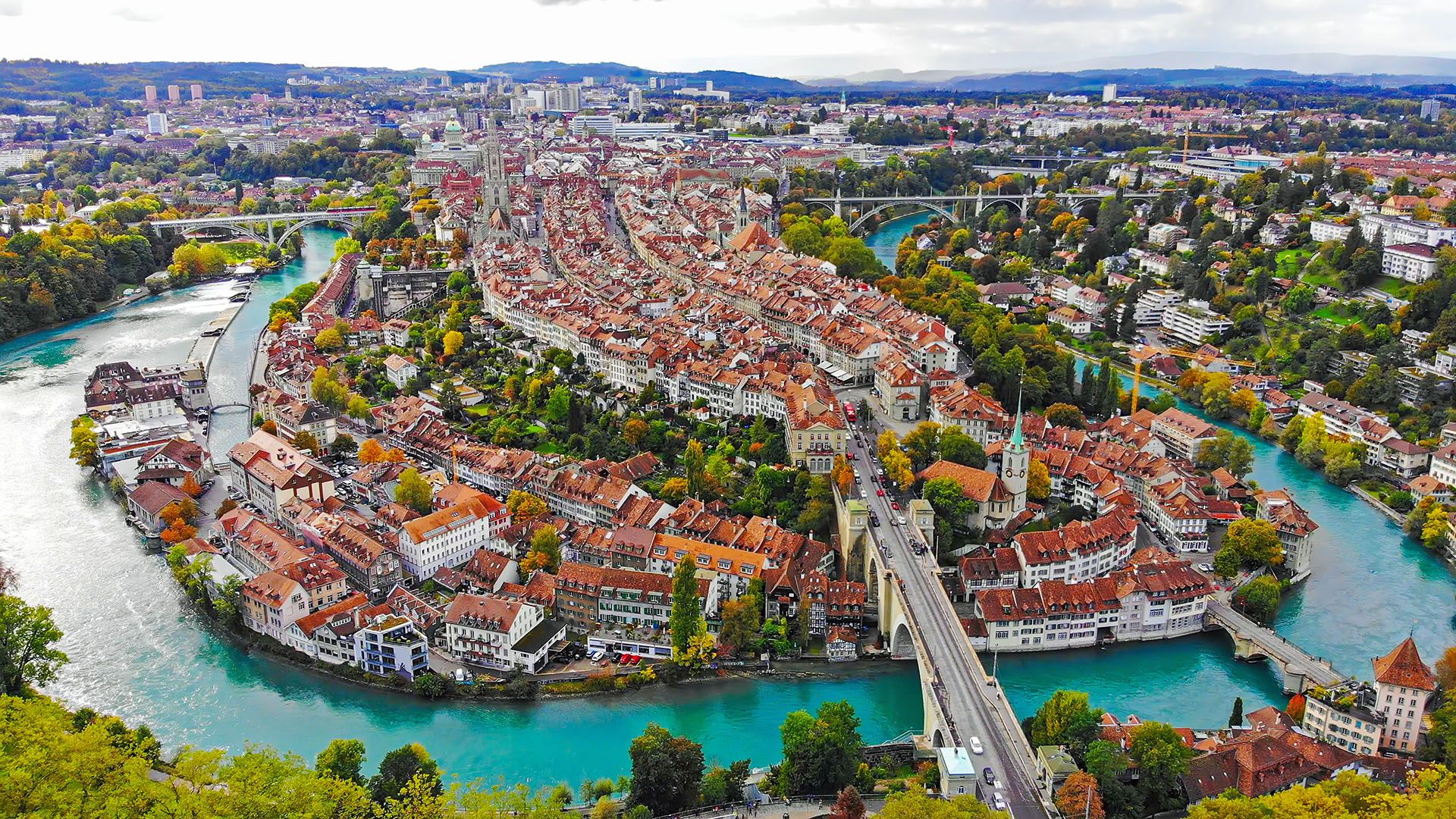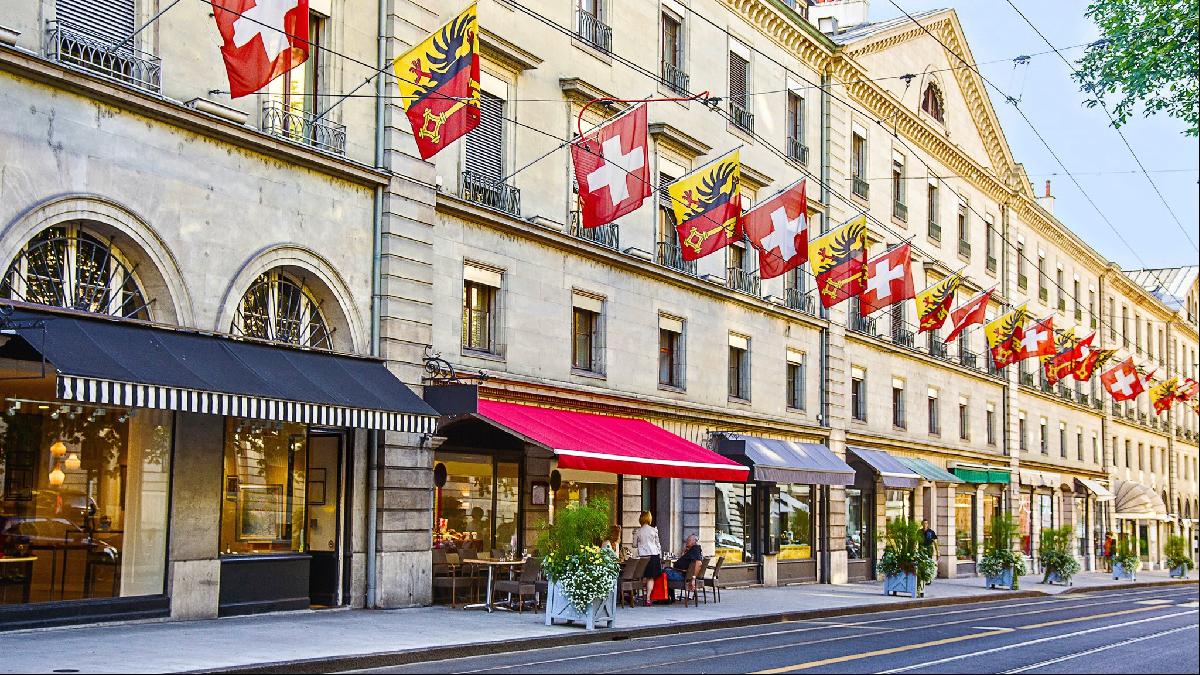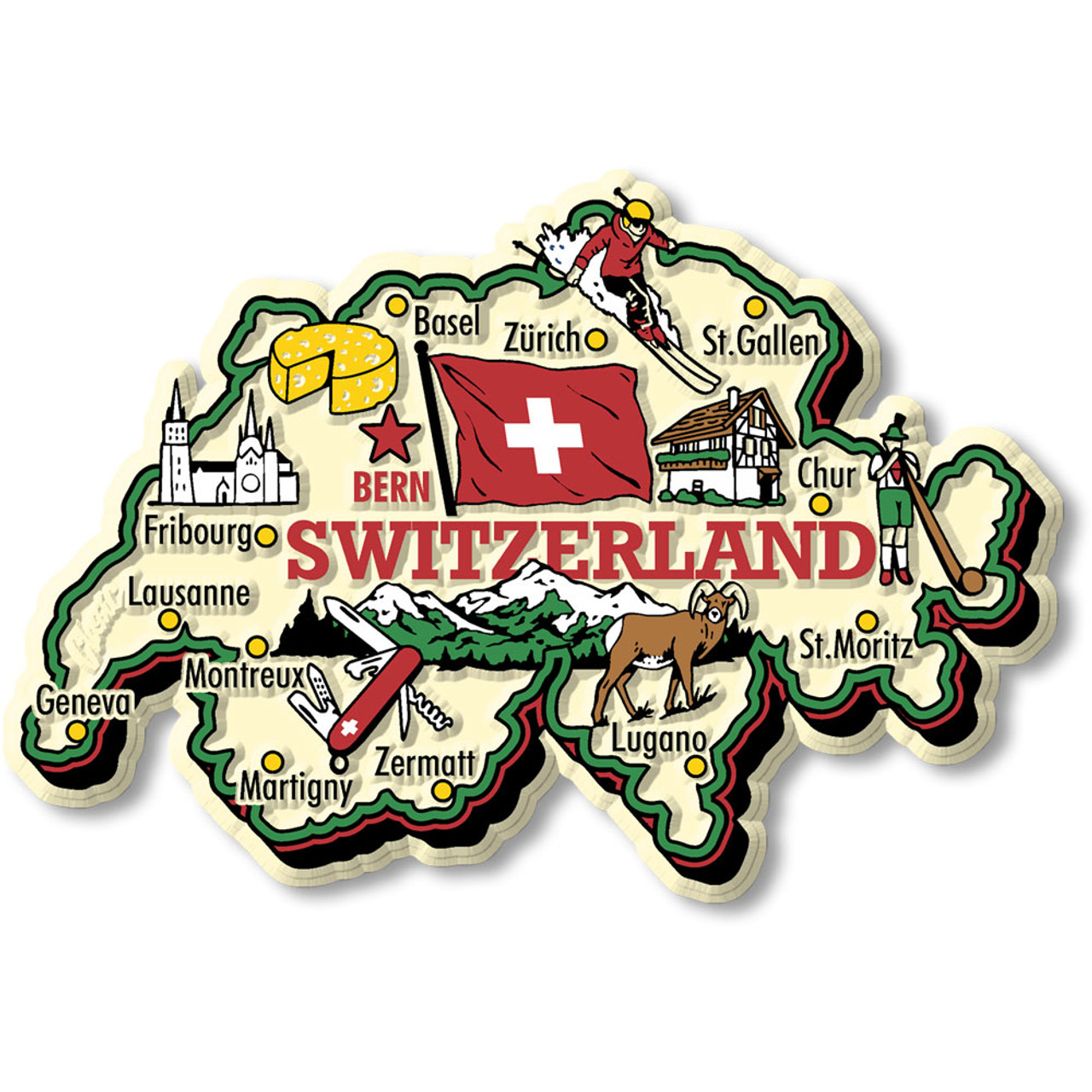
Switzerland
The European nation known as Switzerland in English has several different names in the country's four official languages: die Schweiz (German), Suisse (French), Svizzera (Italian), and Svizra (Romansch). Switzerland's official name is Swiss Confederation, or Schweizerische Eidgenossenschaft in German. To avoid favoring any one language, the Latin term Confoederatio Helvetica (Helvetic Confederation) is used officially. (More about that below.) Early History Switzerland is one of the oldest nations in Europe. The country takes its name from Schwyz, one its original provinces (called cantons). In 1291 three cantons, Schwyz, Uri, and Unterwalden, joined together to create the Ewiger Bund (Eternal League). The new nation grew slowly by adding more cantons over the years. Known today as a peaceful, neutral nation, Switzerland has a turbulent past of religious and political strife, just one example being the Swiss victory over the Austrian Hapsburgs in the Battle of Sempach in 1386.By 1353 the tiny Swiss nation had grown to eight cantons and city-states. But in 1515 the Swiss were defeated in the Battle of Marignano and during the 1500s conflict grew between Catholic and Protestant cantons following Zwingli's (Protestant) Reformation. In 1648 the Treaty of Westphalia granted Switzerland its independence from the Holy Roman Empire of the German Nation, and recognized Swiss neutrality for the first time. However, as the Peasant War of 1653 demonstrates, that did not mean Switzerland had ended its internal political and religious disputes. In 1798 French forces conquered Switzerland and imposed a new centralized government and constitution, but by 1803 Napoleon restored Swiss independence and a country made up of 19 cantons (26 today). Since the 1815 Congress of Vienna, Switzerland has enjoyed neutrality within Europe and has kept the same national borders it has today — although its own internal strife was not over. A civil and religious war in 1839 (the Sonderbundskrieg) eventually led the Swiss to realize that they needed a stronger form of national government. In 1848 a federal constitution was adopted that introduced referenda (popular votes) to settle issues and gave the cantons self-rule. The Swiss constitution was amended in 1874 and again in 1891 to become the one largely in effect today (with minor amendments in 1999).

The Federal Charter, dating from the beginning of August 1291, is the most famous of several federal charters and in traditional and popular historiography is regarded as one of the founding documents of the Swiss Confederation if not the only one. The then Federal Government was that of the local elites in the valleys of Uri, Schwyz and Unterwalden (or Nidwalden, as the text mentions the "lower valley"), and so these are commonly regarded as the first three or the original cantons of the subsequent Confederation. It is preserved and exhibited in the Federal Charter Museum in the town of Schwyz. The Federal Charter was basically a legal document that was intended to secure peace after the death of the German King Rudolf I († 15 July, 1291). Only two of its seven paragraphs are relevant to assistance in case of war while the vast majority of the text deals with issues of criminal and civil law.
Until about 1890, an old tradition had it that the Rütli Oath was the actual basic alliance of the old Confederates and dated it to 1307. The oath is said to have been made on the Rütliwiese (meadow) on the slopes of the Seelisberg on the left bank of Lake Lucerne. It was there that representatives of the so-called original cantons of Uri, Schwyz and Unterwalden (now divided into Obwalden and Nidwalden) swore mutual support.
Similar alliances had in all likelihood already been made previously, but the Rütli Oath was the first to be documented in writing. As with the Federal Charter, it was prompted by the death of the German Emperor Rudolf of Habsburg, who had granted the Swiss relative freedom. Fearing the new ruler could want to take away those rights and freedoms, the three communities merged to form an alliance.The name of William Tell is associated with the events surrounding the Rütli Oath. He is supposed to have killed the wicked bailiff, Gessler, whom the Habsburg overlords had installed to manage their affairs and take away the freedoms of the local people. Considerable doubt has been cast on the authenticity of the tale, but it does reflect the concerns of Tell's contemporaries.Between 1315 and 1388 the Swiss Confederates inflicted three crushing defeats on the Habsburgs, whose aspiration to regional dominion clashed with Swiss self-determination. During that period, five other localities (cantons in modern-day parlance) joined the original three in the Swiss Confederation. Buoyed by their feats, the Swiss Confederates continuously expanded their borders by military means and gained formal independence from the Holy Roman Empire in 1499. Routed by the French and Venetians near Milan in 1515, they renounced expansionist policies. By then the Swiss Confederation had become a union of 13 localities with a regularly convening diet administering the subject territories. Swiss mercenaries continued for centuries to serve in other armies; the Swiss Guard of the Pope is a vestige of this tradition.

Even before the Rütli Oath, the Habsburgs, who ruled over large parts of central Switzerland, had extended their power eastwards to Austria.
But their hunger for power was by no means satisfied. They wanted to consolidate their power in the area along the Gotthard route and take back the territories they had lost. The Confederates were aware of this danger and were determined to defend themselves against the Habsburgs. At the Battle of Morgarten in 1315 a small unit of Confederate troops defeated an Austrian opposing army.
The Confederation gradually expanded during the 40 years after Morgarten. Lucerne joined the Confederation in 1332, Zurich in 1351, Glarus and b>Zug in 1352 and Bern in 1353. At this time the now familiar term "canton" had not yet been used . The members of the Confederation of 1353 were called "Orte" (places). From 1353 to 1481 the composition of the Confederation remained unchanged.
Although there were other alliances in the Habsburg Empire, the Swiss Confederation was an exception: nowhere else were there alliances comprising urban and rural areas. However, in Switzerland, the rural areas were "swallowed up" by the cities.
Originally inhabited by the Helvetians, or Helvetic Celts, the territory comprising modern Switzerland came under Roman rule during the Gallic wars in the 1st century BC and remained a Roman province until the 4th century AD. Under Roman influence, the population reached a high level of civilization and enjoyed a flourishing commerce. Important cities, such as Geneva, Basel, and Zurich, were linked by military roads that also served as trade arteries between Rome and the northern tribes.
After the decline of the Roman Empire, Switzerland was invaded by Germanic tribes from the north and west. Some tribes, such as the Alemanni in central and northeastern Switzerland, and the Burgundians, who ruled western Switzerland, settled there. In 800, the country became part of Charlemagne's empire. It later passed under the dominion of the Holy Roman emperors in the form of small ecclesiastic and temporal holdings subject to imperial sovereignty.
With the opening of a new important north-south trade route across the Alps in the early 13th century, the Empire's rulers began to attach more importance to the remote Swiss mountain valleys, which were granted some degree of autonomy under direct imperial rule. Fearful of the popular disturbances flaring up following the death of the Holy Roman Emperor in 1291, the ruling families from Uri, Schwyz, and Unterwalden signed a charter to keep public peace and pledging mutual support in upholding autonomous administrative and judicial rule. The anniversary of the charter's signature (August 1, 1291) today is celebrated as Switzerland's National Day.

Reformation led to a division between the Protestant followers of Zwingli and Calvin in the German and French parts of the country respectively, and the Catholics. Despite two centuries of civil strife, the common interest in the joint subject territories kept the Swiss Confederation from falling apart. The traffic in mercenaries as well as the alienation between the predominantly Protestant Swiss and their Catholic neighbors kept the Swiss Confederation out of the wars of the European powers, which formally recognized Swiss neutrality in the Treaty of Westphalia in 1648. The Swiss remained neutral during the War of the First Coalition against revolutionary France, but Napoleon, nonetheless, invaded and annexed much of the country in 1797-98, replacing the loose confederation with a centrally governed unitary state.
The Congress of Vienna in 1815 re-established the old confederation of sovereign states and enshrined Switzerland's status of permanent armed neutrality in international law. In 1848, after a brief civil war between Protestant liberals seeking a centralized national state and Catholic conservatives clinging on to the old order, the majority of Swiss Cantons opted for a Federal State, modeled in part on the U.S. Constitution. The Swiss Constitution established a range of civic liberties and made far-reaching provisions to maintain cantonal autonomy to placate the vanquished Catholic minority. The Swiss amended their Constitution extensively in 1874, establishing federal responsibility for defense, trade, and legal matters, as well as introducing direct democracy by popular referendum. To this day, cantonal autonomy and referendum democracy remain trademarks of the Swiss polity.
Switzerland industrialized rapidly during the 19th century and by 1850 had become the second most industrialized country in Europe after Great Britain. During World War I serious tension developed between the German, French, and Italian-speaking parts of the country, and Switzerland came close to violating its neutrality but managed to stay out of hostilities. Labor unrest culminating in a general strike in 1918 marked the interwar period, but in 1937 employers and the largest trade union concluded a formal agreement to settle disputes peacefully, which governs workplace relations to the present day. During World War II, Switzerland came under heavy pressure from the fascist powers, which after the fall of France in 1940 completely surrounded the country. Some political and economic leaders displayed a mood of appeasement, but a combination of tactical accommodation and demonstrative readiness to defend the country helped Switzerland survive unscathed.
The Cold War enhanced the role of neutral Switzerland and offered the country a way out of its diplomatic isolation after World War II. Economically, Switzerland integrated itself into the American-led Western postwar order, but it remained reluctant to enter supranational bodies. Switzerland did not for many decades join the United Nations, even though Geneva became host to the UN's European headquarters and the country played an active role in many of the UN's specialized agencies. Switzerland also remained aloof in the face of European integration efforts, waiting until 1963 to join the Council of Europe. It still remains outside the European Union. Instead, Switzerland in 1960 helped form the European Free Trade Area, which did not strive for political union. Following the Cold War, Switzerland joined the Bretton Woods institutions in 1992 and finally became a member of the United Nations in 2002.